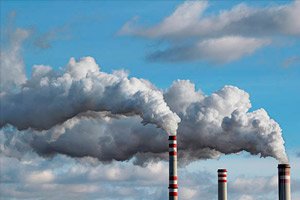
All iLive content is medically reviewed or fact checked to ensure as much factual accuracy as possible.
We have strict sourcing guidelines and only link to reputable media sites, academic research institutions and, whenever possible, medically peer reviewed studies. Note that the numbers in parentheses ([1], [2], etc.) are clickable links to these studies.
If you feel that any of our content is inaccurate, out-of-date, or otherwise questionable, please select it and press Ctrl + Enter.
"The Heart Under the Pressure of the City": Noise, Smog, Heat and "Eternal Chemicals" Hit the Vessels Not One by One, but Together
Last reviewed: 18.08.2025
 ">
">A large expert review was published in Cardiovascular Research: scientists have put together how urban noise, fine dust (PM₂.₅/ultrafine particles), heat waves and persistent pollutants (pesticides, heavy metals, PFAS) simultaneously increase the risk of heart attack and stroke. The main thesis is that these factors rarely act alone; when they overlap, the harm to the heart increases because their biomechanisms intersect: oxidative stress, inflammation (NOX-2), endothelial dysfunction, sleep disturbance and circadian rhythms. The authors suggest looking at health through the prism of the exposome - the sum of all environmental impacts over a lifetime - and restructuring prevention and urban planning.
Background
- Cardiovascular disease (CVD) remains the #1 killer, and the environmental impact is underestimated. Even before the clinical appearance of “traditional” risk factors, noise, air pollution, heat, and persistent chemicals put pressure on the vessels. An international group of cardiologists emphasizes that these stressors often act simultaneously, and their effects are mutually reinforcing through common mechanisms: oxidative stress (NOX-2), inflammation, endothelial dysfunction, and sleep/circadian disruption. This is the logic of the exposome.
- PM2.5: standards are tightened, but almost everyone lives above the target levels. In 2021, the WHO lowered the PM2.5 target to 5 µg/m³ (annual average), recognizing the contribution of fine dust to coronary heart disease and stroke; however, ≈99% of the world's population exceeds this level. The EU is moving towards stricter limits (PM2.5 - to 10 µg/m³ by 2030).
- Noise as a cardiac stressor: WHO guidelines. For long-term exposure to road noise, WHO recommends ≤53 dB Lden and ≤45 dB Lnight; exceeding this is associated with hypertension, coronary heart disease, and sleep disturbance. Urban noise amplifies the effect of dust, a classic example of stressor stacking.
- Heat and “urban heat islands”. Heat waves increase CVD mortality (meta-analyses show double-digit increases), and risk is higher in cities due to the heat island effect and vulnerability of the elderly/chronic. Mechanisms: dehydration, tachycardia, vasoconstriction, thrombogenesis. Climate trends make the problem systemic.
- PFAS and other “forever” chemicals: a long-lasting trace in lipids and blood pressure. According to consensus assessments and reviews, PFAS exposure is associated with elevated cholesterol, hypertension, and vascular risk markers; a mixture of PFAS has an additive effect. It is an important component of the “chemical” exposome, along with metals and pesticides.
- Policy context and practical implications. New WHO air and noise guidelines and updated EU standards encourage “double benefit” measures: reduced traffic/speed, green spaces, “quiet” pavements, cooling of neighbourhoods, control of PFAS in water – all of which reduce several risk factors simultaneously. The review calls for including the exposome in cardiovascular risk stratification and targeting vulnerable groups (the elderly, residents of noisy/hot neighbourhoods).
What exactly was found and why is it important?
- Transport noise activates stress hormones, disrupts sleep, increases blood pressure and “heats up” vascular inflammation. Airborne dust penetrates deep into the lungs, and ultrafine particles even into the blood - they trigger oxidative stress and damage the endothelium, accelerating atherosclerosis. Heat is especially dangerous for the elderly and patients with existing diseases; in cities, the effect is aggravated by the “heat island”. Persistent pollutants (pesticides, metals, PFAS) accumulate in soil, water and food, increase inflammation and spoil vascular function - this is a long-term contribution to risk.
- Adding factors = amplifying harm. Noise can amplify the effects of air pollutants, and heat can “catalyze” toxic damage from chemicals. The combined mechanisms (NOX-2, inflammation, endothelial dysfunction, sleep disruption) explain why the “cocktail” of exposures is greater than the sum of the parts—the multimodal exposome.
Who was behind the work?
An international team of cardiologists and environmental scientists: Thomas Münzel, Andreas Daiber, Marin Kuntic (Mainz), Jos Lelyveld (Max Planck/Cyprus) and colleagues from Copenhagen, Munich, Barcelona, Edinburgh and Boston. This is an expert statement/review that consolidates disparate evidence into a “field map” for clinicians and city authorities. Published on 12 August 2025.
What to do about this - not only the doctor, but also the city
- Policymakers and cities: strict noise and PM₂.₅/UCH regulations, “green corridors,” asphalt decompression, quieter road surfaces, and nighttime traffic/aircraft restrictions; control of PFAS and other “forever” chemicals in water and soil. This reduces several risk factors at once.
- For the healthcare system: include exposure in risk assessment (noise, air, heat, chemicals) and target prevention to vulnerable groups - the elderly, heart patients, residents of "hot" areas and traffic hubs.
- For each person (while infrastructure catches up): protect sleep (noise absorption in the bedroom), ventilate during “clean” hours, use portable filters/air monitoring resources, drink tap water through certified filters (for PFAS/metals), avoid overheating (shade, water, gradual adaptation to heat). This does not replace policy, but reduces exposure here and now. (These steps follow from the mechanisms described in the review.)
Why trust
The material is a peer-reviewed review in the flagship journal of the European Society of Cardiology; the key findings are consistent with independent press releases from the University Hospital Mainz and scientific media reports (MedicalXpress).
Source: Münzel T., Kuntic M., Lelieveld J., Daiber A., et al. A comprehensive review/expert statement on environmental risk factors of cardiovascular disease, Cardiovascular Research, 2025. https://doi.org/10.1093/cvr/cvaf119
